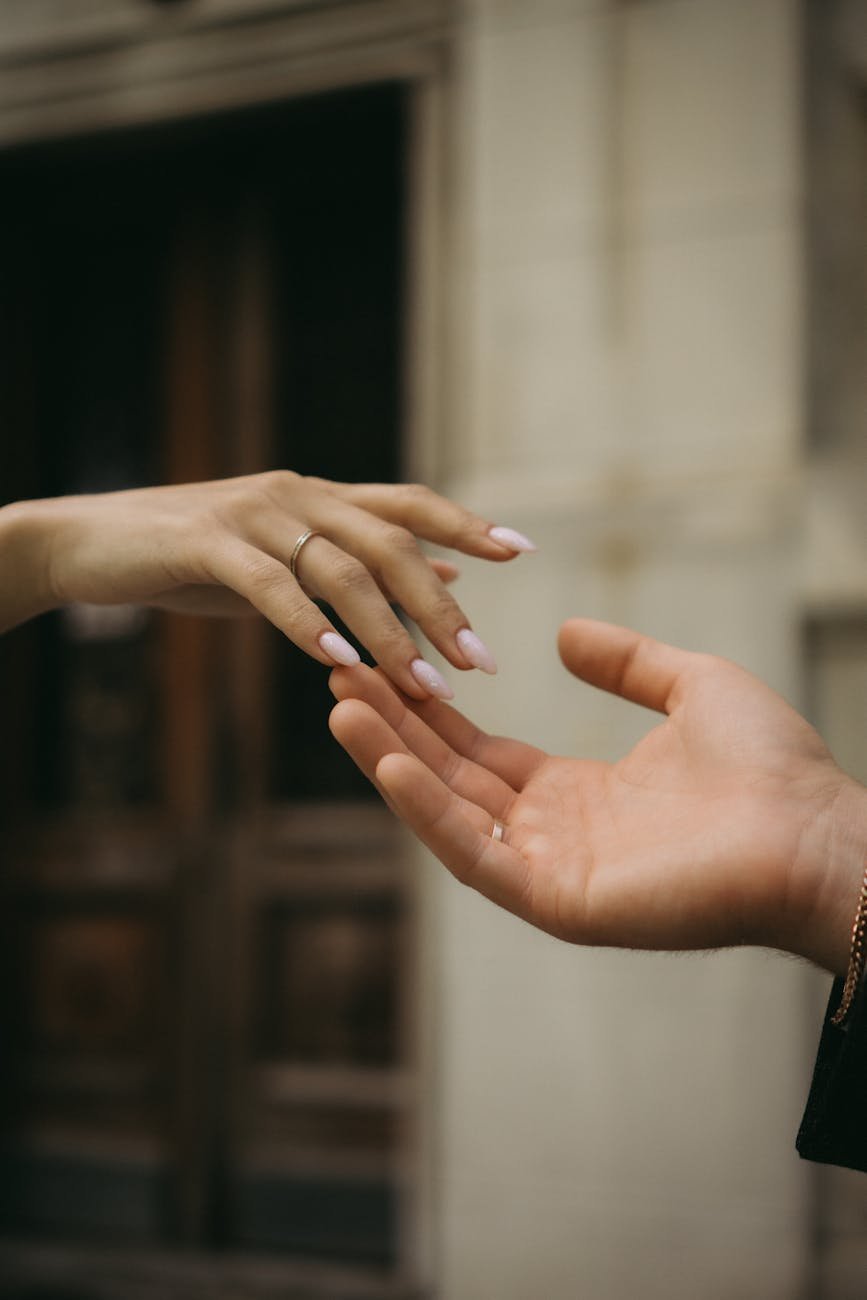
Photo by Anastasiia Chaikovska on <a href="https://www.pexels.com/photo/close-up-of-hands-touching-12367746/" rel="nofollow">Pexels.com</a>
A sermon based on Luke 13:10–17. You can use it for evangelism.
Introduction
Imagine being bent over for eighteen long years—unable to look up, unable to walk straight, unable to embrace your loved ones fully. That was the woman’s condition in Luke 13. Her body was bent, her spirit burdened, and her hope nearly gone. But one Sabbath day, she encountered Jesus. And with a single word, her life was forever changed.
Friends, this story is not just about one woman—it is about all of us. Because sin has bent us down, broken our freedom, and blinded us from seeing God’s glory. Yet the same Jesus who straightened her, longs to set us free today.
1. Humanity Bent by Sin
The woman in the synagogue represents the human condition. The Bible says she was “crippled by a spirit for eighteen years; she was bent over and could not straighten up at all” (v. 11). That is what sin does—it weighs us down, it bends our souls, it keeps us from standing in the dignity God intended.
a. Some are bent by guilt from past failures.
b. Others by addictions and destructive habits.
c. Still others by pride, greed, or unforgiveness.
Socio-theologically, this also points to how systems of sin—poverty, injustice, oppression—bend communities for generations. Many are not free because society has chosen greed over compassion.
But whether personal sin or social evil, the reality is the same: apart from Christ, we cannot straighten ourselves.
2. Christ Who Sees, Calls, and Sets Free
Notice what Jesus did. He saw her (v. 12). Others may have ignored her, but Jesus looked at her with compassion. Friend, you may feel invisible, but Jesus sees you. He knows the burden you carry.
Then He called her forward. She didn’t initiate the healing—Jesus did. That is grace. Salvation begins not with us reaching for God, but God reaching for us.
Finally, He spoke freedom: “Woman, you are set free from your infirmity” (v. 12). With His touch, immediately she stood up straight and praised God. That is what salvation looks like—Jesus breaking the power of sin, straightening what was broken, and giving us new life.
3. The Invitation to Stand Straight in Christ
But not everyone rejoiced. The synagogue ruler was angry, more concerned about rules than people, about tradition than transformation. Beloved, sin blinds even religious people. But Jesus declared: “Should not this woman, a daughter of Abraham, whom Satan has kept bound for eighteen long years, be set free on the Sabbath?” (v. 16).
Here is the Good News: If the Sabbath was a day of rest and freedom, then Jesus is the true Sabbath—He is our rest, our healing, our liberation.
Today, He offers the same freedom to you:
a. Freedom from guilt—through His forgiveness.
b. Freedom from sin’s chains—through His cross.
c. Freedom from fear and hopelessness—through His resurrection.
Conclusion / Evangelistic Appeal
Friend, are you bent down by life? Do you feel weighed down by sin, failure, or brokenness? Jesus sees you. Jesus is calling you. And Jesus wants to set you free.
The question is: Will you come to Him? Will you let Him straighten your life by His grace?
Just as that woman stood tall and praised God, you too can walk out today renewed, forgiven, and set free.
Invitation:
If you’ve never surrendered your life to Christ, today is the day. Come to Him. Receive His freedom. Stand tall in His grace. For when the Son sets you free, you will be free indeed.
About The Author
Discover more from COMMUNICATIONS
Subscribe to get the latest posts sent to your email.







